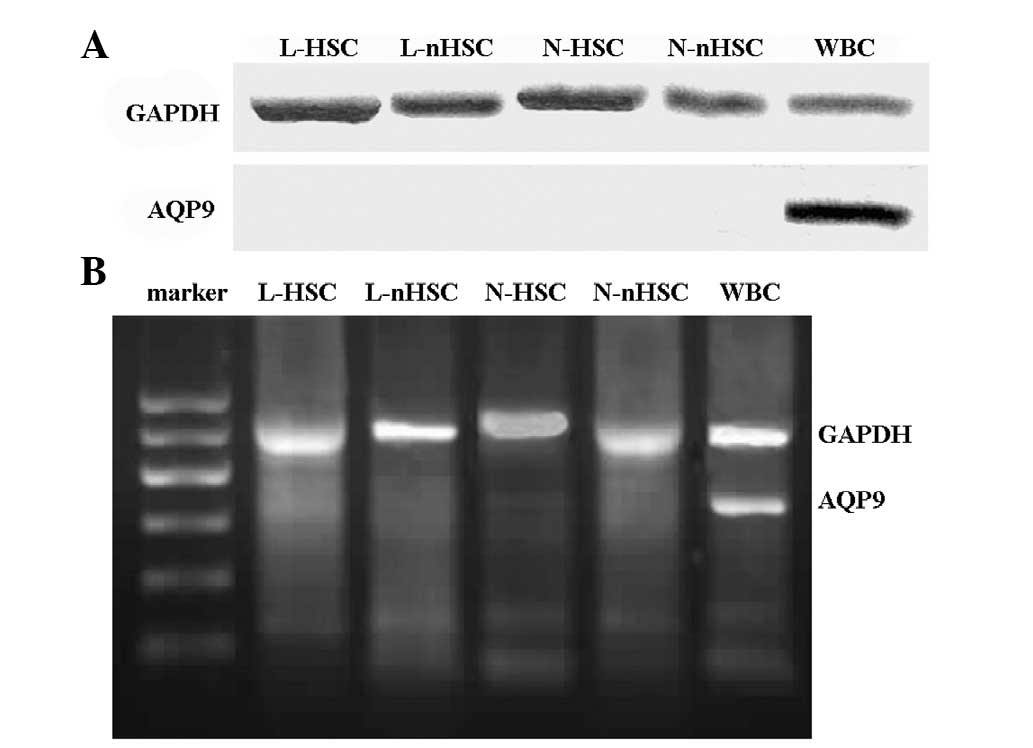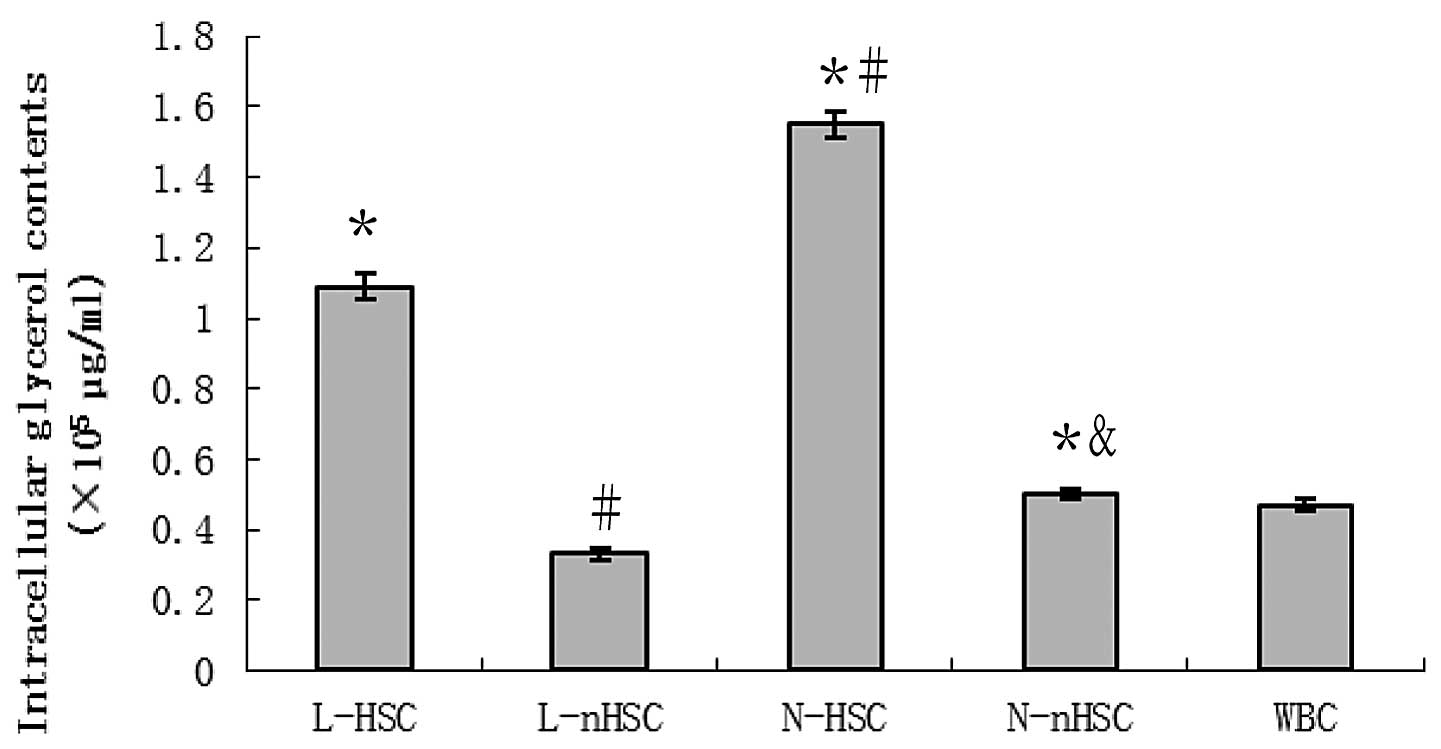|
1
|
Siegel R, Naishadham D and Jemal A: Cancer
statistics, 2013. CA Cancer J Clin. 63:11–30. 2013.
|
|
2
|
Siegel R, Naishadham D and Jemal A: Cancer
statistics, 2012. CA Cancer J Clin. 62:10–29. 2012.
|
|
3
|
Iredale JP: Models of liver fibrosis:
exploring the dynamic nature of inflammation and repair in a solid
organ. J Clin Invest. 117:539–548. 2007.
|
|
4
|
Martin P: Wound healing - aiming for
perfect skin regeneration. Science. 276:75–81. 1997.
|
|
5
|
Michalopoulos GK and DeFrances MC: Liver
regeneration. Science. 276:60–66. 1997.
|
|
6
|
Arnold I and Watt FM: c-Myc activation in
transgenic mouse epidermis results in mobilization of stem cells
and differentiation of their progeny. Curr Biol. 11:558–568.
2001.
|
|
7
|
Ogawa M: Differentiation and proliferation
of hematopoietic stem cells. Blood. 81:2844–2853. 1993.
|
|
8
|
Joel DM, Bar H, Mayer AM, et al: Seed
ultrastructure and water absorption pathway of the root-parasitic
plant Phelipanche aegyptiaca (Orobanchaceae). Ann Bot.
109:181–195. 2011.
|
|
9
|
Ishibashi K, Kuwahara M, Gu Y, et al:
Cloning and functional expression of a new aquaporin (AQP9)
abundantly expressed in the peripheral leukocytes permeable to
water and urea, but not to glycerol. Biochem Biophys Res Comm.
244:268–274. 1998.
|
|
10
|
Elkjaer M, Vajda Z, Nejsum LN, et al:
Immunolocalization of AQP9 in liver, epididymis, testis, spleen,
and brain. Biochem Biophys Res Commun. 276:1118–1128. 2000.
|
|
11
|
Bhattacharjee H, Carbrey J, Rosen BP and
Mukhopadhyay R: Drug uptake and pharmacological modulation of drug
sensitivity in leukemia by AQP9. Biochem Biophys Res Commu.
322:836–841. 2004.
|
|
12
|
Hara-Chikuma M and Verkman A:
Physiological roles of glycerol-transporting aquaporins: the
aquaglyceroporins. Cell Mol Life Sci. 63:1386–1392. 2006.
|
|
13
|
Verkman AS: Physiological importance of
aquaporin water channels. Ann Med. 34:192–200. 2002.
|
|
14
|
Carbrey JM, Gorelick-Feldman DA, Kozono D,
et al: Aquaglyceroporin AQP9: solute permeation and metabolic
control of expression in liver. Proc Nat Acad Sci USA.
100:2945–2950. 2003.
|
|
15
|
Leung J, Pang A, Yuen WH, et al:
Relationship of expression of aquaglyceroporin 9 with arsenic
uptake and sensitivity in leukemia cells. Blood. 109:740–746.
2007.
|
|
16
|
Monzani E, Shtil AA and La Porta CA: The
water channels, new druggable targets to combat cancer cell
survival, invasiveness and metastasis. Curr Drug Targets.
8:1132–1137. 2007.
|
|
17
|
Qu F, Wang FF, Lu XE, et al: Altered
aquaporin expression in women with polycystic ovary syndrome:
hyperandrogenism in follicular fluid inhibits aquaporin-9 in
granulosa cells through the phosphatidylinositol 3-kinase pathway.
Human Reprod. 25:1441–1450. 2010.
|
|
18
|
Damiano AE, Zotta E and Ibarra C:
Functional and molecular expression of AQP9 channel and UT-A
transporter in normal and preeclamptic human placentas. Placenta.
27:1073–1081. 2006.
|
|
19
|
Badaut J, Brunet JF and Petit JM:
Induction of brain aquaporin-9 (AQP9) in catecholaminergic neurons
in diabetic rats. Brain Res. 1188:17–24. 2008.
|
|
20
|
Yamamoto N, Yoneda K, Asai K, et al:
Alterations in the expression of the AQP family in cultured rat
astrocytes during hypoxia and reoperation. Brain Res Mol Brain Res.
90:26–38. 2001.
|
|
21
|
Jelen S, Wacker S, Aponte-Santamaría C, et
al: Aquaporin-9 protein is the primary route of hepatocyte glycerol
uptake for glycerol gluconeogenesis in mice. J Bio Chem.
286:44319–44325. 2011.
|
|
22
|
Miranda M, Ceperuelo-Mallafré V, Lecube A,
et al: Gene expression of paired abdominal adipose AQP7 and liver
AQP9 in patients with morbid obesity: Relationship with glucose
abnormalities. Metabolism. 58:1762–1768. 2009.
|
|
23
|
Calamita G, Fanelli E, Svelto M, et al:
Biophysical assessment of AQP9 as real membrane pathway in
hepatocyte glycerol uptake. FASEB J. 24(Meeting Abstract
Supplement): 10002010.
|
|
24
|
Lebeck J: Metabolic impact of the glycerol
channels AQP7 and AQP9 in adipose tissue and liver. J Mol
Endocrinol. 52:R165–178. 2014.
|
|
25
|
Nagahara M, Waguri-Nagaya Y, Yamagami T,
et al: TNF-alpha-induced aquaporin 9 in synoviocytes from patients
with OA and RA. Rheumatology. 49:898–906. 2010.
|
|
26
|
Rodríguez A, Catalán V, Gómez-Ambrosi J
and Frühbeck G: Aquaglyceroporins serve as metabolic gateways in
adiposity and insulin resistance control. Cell Cycle. 10:1548–1556.
2011.
|
|
27
|
Sun Q, Chen X, Ma J, et al: Mammalian
target of rapamycin up-regulation of pyruvate kinase isoenzyme type
M2 is critical for aerobic glycolysis and tumor growth. PNAS.
108:4129–4234. 2011.
|


















